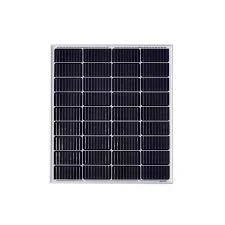double sided solar panels efficiency
The Efficiency of Double-Sided Solar Panels A Comprehensive Overview
In recent years, the increasing demand for renewable energy sources has compelled researchers and manufacturers to innovate and improve solar technologies. Among the various advancements in this field, double-sided (or bifacial) solar panels have garnered considerable attention due to their potential for enhanced energy efficiency. These panels offer several advantages over traditional single-sided solar panels, making them a promising option for a sustainable energy future.
Understanding Double-Sided Solar Panels
Double-sided solar panels are designed to capture solar energy on both sides, which allows them to harness sunlight directly from the sun as well as reflected light from surfaces beneath them, such as the ground or rooftops. This innovative design can significantly increase the overall energy output of the panels, compared to traditional panels that only collect light from one side.
Efficiency Benefits of Double-Sided Panels
1. Increased Energy Output One of the most significant benefits of double-sided solar panels is their ability to capture more sunlight, increasing energy production. Studies have shown that bifacial panels can produce up to 20-30% more energy than traditional monofacial panels under optimal conditions. This increase is largely attributed to the reflected light from the ground and other surfaces, effectively maximizing the available light for conversion into electricity.
2. Improved Performance in Various Conditions Double-sided panels exhibit superior performance in a variety of environmental conditions. For instance, in snowy areas, the reflection of sunlight off the white snow can significantly enhance the energy harvested by bifacial panels. Similarly, surfaces with high albedo (reflectivity), such as light-colored concrete or sand, can also contribute to the efficiency benefits of these panels.
double sided solar panels efficiency

3. Reduced Land Use As bifacial panels produce more energy per unit area than their traditional counterparts, they can help reduce the land footprint required for solar installations. This means that less land is needed to generate the same amount of energy, which is particularly important in locations where land availability is an issue.
4. Longer Lifespan Double-sided solar panels are often built with more durable materials and protective coatings, making them more resilient to environmental factors. This can translate to a longer lifespan and lower maintenance costs over time, making them a more economically viable option in the long run.
Challenges and Considerations
Despite their numerous advantages, double-sided solar panels also face some challenges. The effectiveness of their energy capture is significantly influenced by the installation environment. The ground material and its reflectivity play a crucial role in determining how much extra energy can be generated. Additionally, the initial cost of bifacial panels tends to be higher than that of traditional panels, which may deter some potential users from making the switch.
Moreover, the installation of double-sided panels requires careful planning and positioning to maximize their efficiency. For optimal performance, it's essential to consider factors such as the tilt angle, height above ground, and the surrounding environment to ensure that the panels can capture as much reflected light as possible.
Conclusion
In conclusion, double-sided solar panels represent a significant advancement in solar technology, offering improved efficiency and energy production compared to traditional single-sided panels. As the world continues to transition towards a more sustainable energy landscape, the adoption of bifacial solar panels could play a crucial role in meeting increasing energy demands while minimizing the environmental impact. However, it is essential for potential users to weigh the initial costs against long-term benefits and carefully assess installation conditions to maximize the advantages of this innovative technology. With ongoing advancements and research, double-sided solar panels are poised to become an integral part of the future of renewable energy.
-
Unlocking Energy Freedom with the Off Grid Solar InverterNewsJun.06,2025
-
Unlock More Solar Power with a High-Efficiency Bifacial Solar PanelNewsJun.06,2025
-
Power Your Future with High-Efficiency Monocrystalline Solar PanelsNewsJun.06,2025
-
Next-Gen Solar Power Starts with Micro Solar InvertersNewsJun.06,2025
-
Harnessing Peak Efficiency with the On Grid Solar InverterNewsJun.06,2025
-
Discover Unmatched Efficiency with the Latest String Solar InverterNewsJun.06,2025







